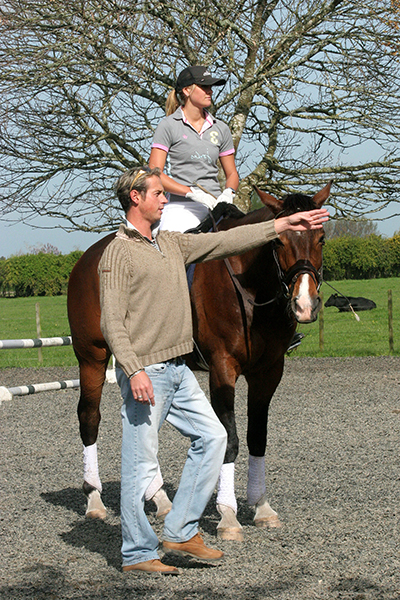 Story by Chris Hector & photos by NZ Horse & Pony/Trish Dunell
Story by Chris Hector & photos by NZ Horse & Pony/Trish Dunell
Carl Hester is one of Britain’s most successful dressage riders and trainers. He first represented Britain at the 1990 WEG riding Rubelit. Carl also made a name for himself as a coach for Eventing Riders – helping some of the most famous…
“I was team trainer in Atlanta for the New Zealanders. I did Mary King for a while. At one time I was having 18 – 20 to help at a Badminton, which was a killer. That’s not the way to do it. You turn up at an event and you get bombarded. Look, look, look, HELP! Over the years I have worked with a few of the better known eventers – it is always a challenge.”
So do you change a lot when you teach eventers from a ‘normal’ dressage rider?
“Actually I don’t. I think the main thing with event riders is the stabilizing of the outline. That is really what is lacking, consistency of outline. The next step is the suppleness, which is also lacking in lots of their horses. I think a lot of the eventers haven’t realised that the neck is the basis of the way a horse learns to balance himself, and that’s where you can unlock the tension. It was mainly a question of teaching the riders more about stretching exercises, and bending exercises.”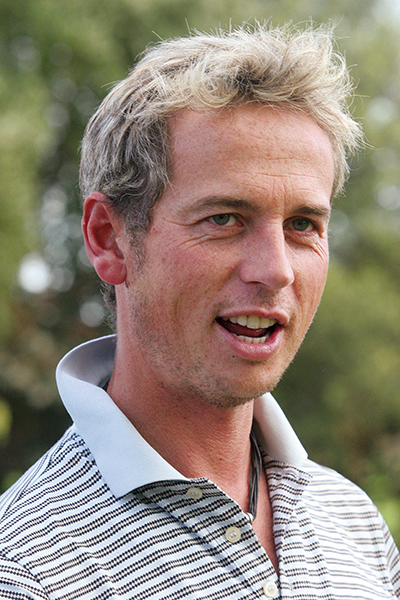
How do you help stabilize the outline?
“Basically the riders need to ride the horse to the bit, and not to block from the bit back. The horses have to go in a long neck, but many horses get in a tense, short outline, and that creates the mistakes in the test. By using suppling exercises, lots more stretching exercises, and more work in canter rather than hours of uncomfortable sitting trot. They all try to sit at the trot, but it’s not their fave, they like to be off the saddle, not on the saddle. I teach them that until the horse is swinging, they can’t sit. I don’t sit on my young dressage horses until they are at least five or six – I wouldn’t do sitting trot on a four-year-old. An eight-year-old eventer can sometimes be as backward as a four-year-old dressage horse… and yet they are trying to do sitting trot and the movements of the test. More canter work teaches riders how to get the horse to take the hand, be in a proper balance on its own, in a long frame… after that they can come to the trot work.”
more follows
“The movements they have to do in an eventing dressage test are fairly basic. They don’t need to be practising them all the time, but so many of them, for example, got stuck with the flying changes. Horses should be doing flying changes when they are around six, but unfortunately so many eventers have been doing counter canter for years, and when the horse does a flying change they are surprised, and they stay surprised, way too long. The other real problem with eventing riders is getting them to learn the timing for the changes.” “I don’t go about helping the eventing riders differently, I just think that they need to look at the dressage phase differently and learn how to get a horse balanced.”
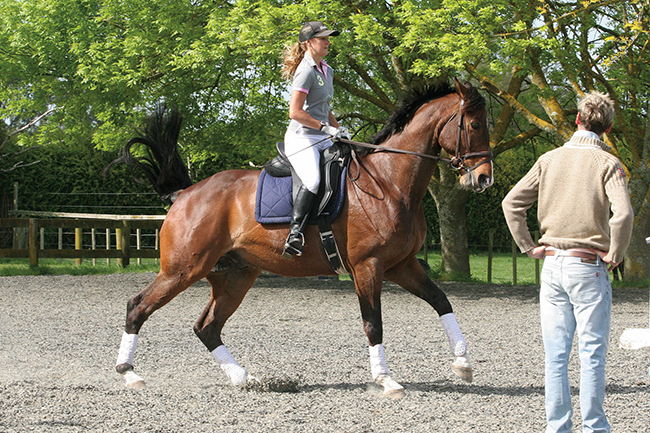 You finally persuaded Mary King that there weren’t a couple of steps of trot in the middle of the flying change?
You finally persuaded Mary King that there weren’t a couple of steps of trot in the middle of the flying change?
“I did. I kind of poached Mary – I went up to her after she’d ridden a test and said, I really could help you with those changes, what you are doing is freaking me out – badly! She was doing simples, or they were 60 metres late, I said, Mary it’s all about the timing, it’s all about the counting. You are asking on the wrong stride, or maybe not even asking. It was a really interesting project because Mary obviously has an incredible eye and a feel for a stride, and yet it was the timing for a flying change that needed working on, that was what was missing. It was really interesting helping someone who has such an amazing feel as a jump rider going cross-country, and she is an elegant rider on the flat, but she just didn’t have the timing for the changes. Some people have the perfect timing, but aren’t refined in their aids, and some don’t have the timing, and that’s why it is always going wrong, the horse is only trying to do what they are asking.”
more follows
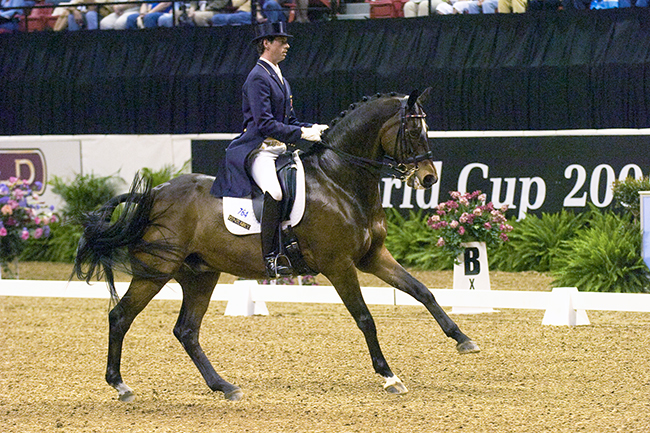
Carl and Escapado, his ride at the time, competing at the World Cup in Las Vegas. Escapado was by the Thoroughbred, Ex Libris.
Most of the eventing riders are both athletic and un-afraid of what they are doing in the saddle, you can tell them – do this, and they are able to do it….
“Absolutely. They now all know what they have to do. They know if they aren’t getting in the 20s – 40s in the dressage, they are up against a brick wall. They can do it, and they do get more help now. The better moving horses are coming into eventing, the riders have to learn to sit on the backs of movers – they are not sofas those big movers. They certainly can do what you tell them… With a lot of the younger ones it is about being able to sit on the horse without stirrups, that is what is still missing. Very often they get to three day event level and then they want help, but they find it too boring to go back to the basics – really they needed to get help when they were riding their novice horses.”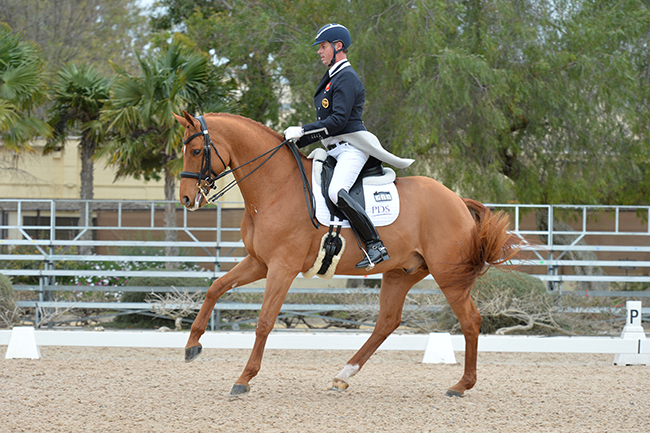
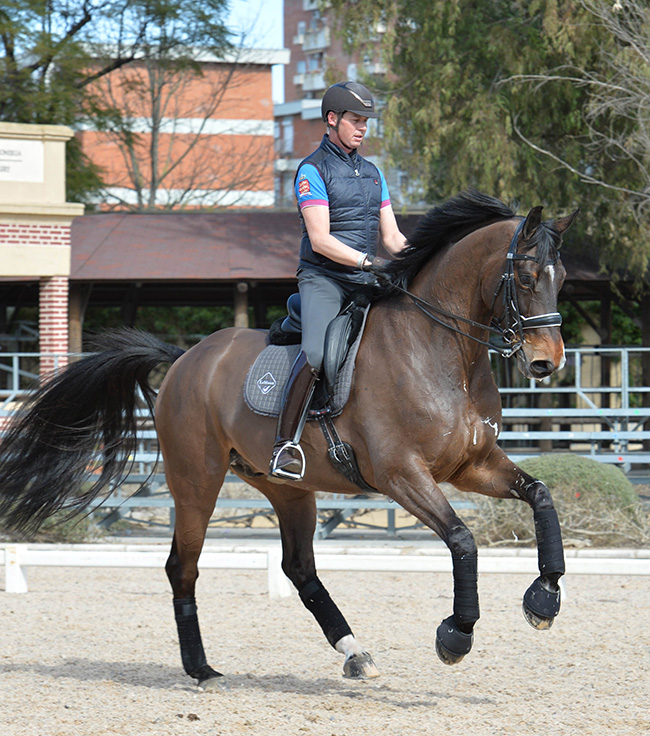
Carl and his Rio ride, Nip Tuck, at Jerez in 2016
Is the idea that the eventing horse is that much fitter that you can’t possibly control them just a cop-out for bad riding?
“It’s just an excuse. Of course the event horses are hotter because they have more blood, but when we consider the hours and hours the top dressage riders train their horses, they might not be wind-fit, but they are fit. You go on the World Cup circuit and you’ll see dressage horses being ridden for two and a half hours a day. They are fit, but they are controlled… most of them. I think the problem comes down to getting the wrong balance when the horse is tense, it comes from taking too strong a hold on the reins and shortening the neck, then that leaves the tension in there all the time.”
“I gave up teaching event riders – I handed them on… but of course there will be cries for help. What it will do is create a much bigger market for the schoolmaster dressage horses because these guys need to sit on a horse and get the timing. There are a few eventing riders who are now turning to dressage. Peter Grey – a very experienced eventer – bought a Prix St Georges horse from us, and he said ‘my aim is to do Grand Prix in six months’ and I said, ‘no your aim is make a partnership in a year, you don’t realise with a dressage horse how this works…’ He rang me and told me, I can’t believe it, but you are right. I really did think I was going to do a Grand Prix in three months. It’s still about partnership – of course he can learn the movements – and within 48 hours of trying the horse, we had him doing fours, threes and twos and a couple of one tempis, that horse could help him. But to be balanced enough to do it in a test, then you are talking a long-term partnership. I guess that’s what a lot of the eventing riders are going to have to learn, that as the test becomes more demanding, they are really going to have to work on that partnership.”
For more on Carl Hester, check out this link: http://www.horsemagazine.com/thm/whos-who/hester-carl/
Want to breed yourself a top eventer? Go to www.ihb.com.au and find the right stallion for your mare.
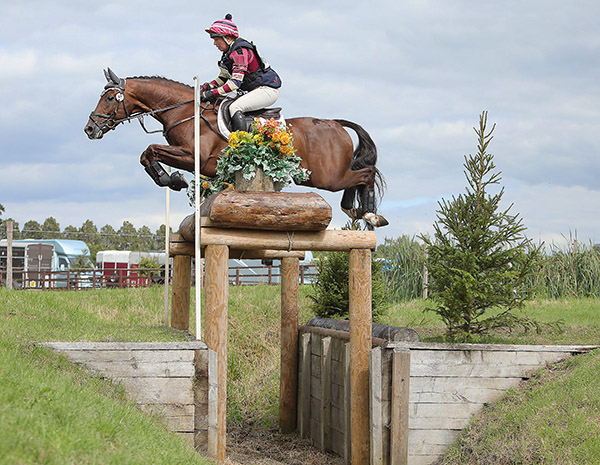 Britannia Royal
Britannia Royal
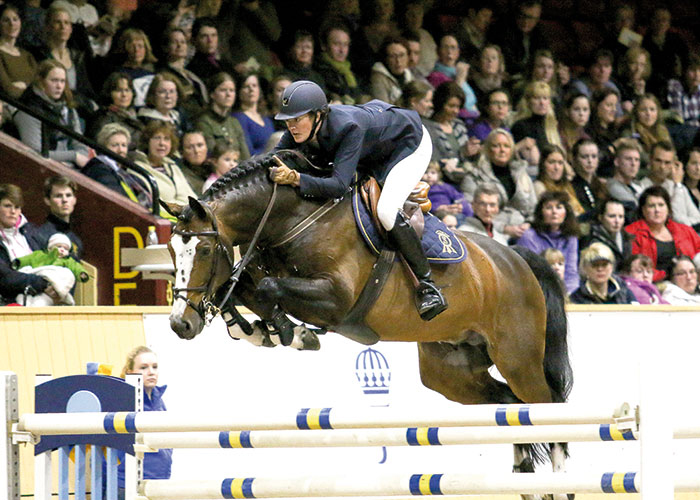 Balou du Rouet
Balou du Rouet



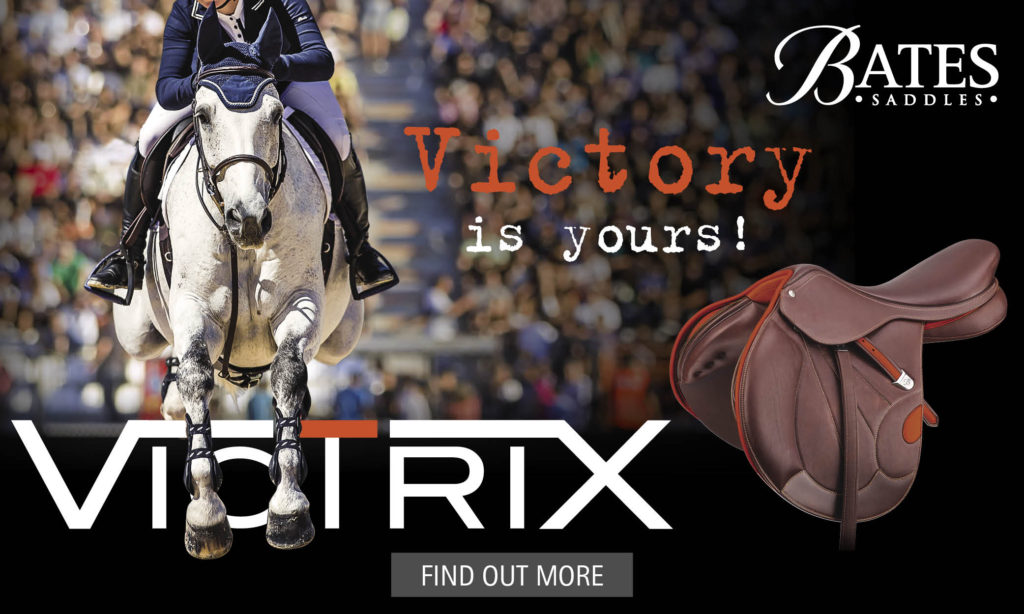
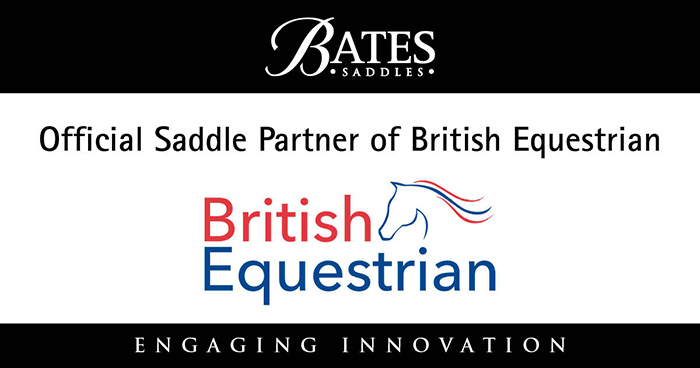
This was really interesting. As an event rider, I’m also trying to get in to dressage and am having a bit of difficulty. I recently saw a smartgirth that is supposed to help with eventing and dressage training on kickstarter: http://kck.st/1UjColU it provides left & hand analysis, which I think is where my problem lies. Has anyone else seen this, or knows of similar products which could help? 🙂